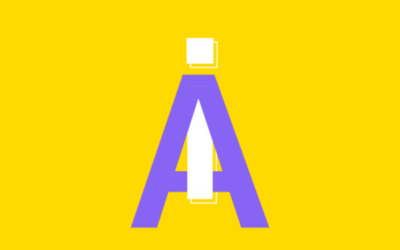Eine großartige Stellenanzeige zu schreiben, ist nicht so einfach, wie es scheint. Sie wissen schon – eine Anzeige, die die besten Talente anzieht. Gerade in Zeiten, in denen Fachkräfte knapp sind,...
Newsbase
Alles vom Autor lesen
Herzlich willkommen in unserem Autorenarchiv! Hier findest du alle Artikel von deinem Lieblingsautor an einem Ort. Von seinen frühesten Beiträgen bis zu seiner neuesten Arbeit kannst du leicht stöbern und die Themen entdecken, die er behandelt, sowie seine einzigartige Perspektive auf jeden davon. Egal, ob du schon lange ein Fan bist oder diesen Autor gerade zum ersten Mal entdeckst, wir hoffen, dass du Spaß daran hast, sein Archiv zu erkunden und Inspiration in seinen Worten zu finden.
Der Unterschied zwischen ChatGPT und Textmetrics‘ Job Ad Generator
ChatGPT ist großartig für die Erstellung von Inhalten, richtig? Wenn Sie es also bereits für einige Ihrer inhaltsbezogenen Aufgaben verwenden, warum nicht auch für das Schreiben von Stellenanzeigen?...
9 Tipps, wie man einen KI-Text vermenschlicht
Viele Menschen nutzen KI, um ihre Texte zu schreiben. Anfangs waren wir von ChatGPT und ähnlichen Tools beeindruckt, doch im Laufe der Zeit haben wir erkannt, dass KI-gestützte Texte immer noch...
Inklusive Qualitätstexte mit optimalem Datenschutz
Wie werden Ihre Daten von Textmetrics sicher gespeichert? Textmetrics hält sehr hohe Standards bei der Verarbeitung personenbezogener Daten ein. Dies ist innerhalb der EU gemäß den strengen...
Nutzen Sie datengestützte Rekrutierung, um die Qualität einer Einstellung zu verbessern
Wie oft haben Sie schon die falsche Person für eine Stelle eingestellt? Und wie viele Mitarbeiter haben kurz nach ihrem Antritt gekündigt, weil die Stelle nicht zu ihnen passte? Die Antwort ist...
Dos und Don’ts für SEO in Stellenbeschreibungen
Haben Sie gerade eine Stelle online ausgeschrieben? Und wollen Sie eine vielfältige Gruppe von Bewerbern ansprechen? Den bestmöglichen Kandidaten finden? Dann muss Ihre Stelle im Internet leicht zu...
Neu: die Stellenbeschreibung des Chief Diversity Officers
Heutzutage haben Vielfalt und Inklusion am Arbeitsplatz höchste Priorität. Die Ziele in Bezug auf Vielfalt und Inklusion (V&I-Ziele), die sich Unternehmen setzen, werden langsam aber sicher zu...
Wie SEO-Stellenbeschreibungen Ihnen helfen können, Ihre Ziele in Bezug auf Vielfalt und Inklusion zu erreichen
Die Auffindbar der Stellenbeschreibungen Ihres Unternehmens ist extrem wichtig, wenn Sie so viele potenzielle Bewerber wie möglich erreichen wollen. Genau das sollten Sie anstreben, wenn sich Ihr...
Vielfalt und Inklusion mit Hilfe einer erweiterten Schreibplattform
Das erreichen Ihren Zielen in Bezug auf Vielfalt und Inklusion ist etwas, das unzählige Unternehmen anstreben. Nicht nur, weil es etwas ist, das von der Gesellschaft gefordert wird, sondern auch,...
Die Wichtigkeit, Stellenbeschreibungen auf dem Niveau B1 zu schreiben
Vielfalt und Inklusion am Arbeitsplatz stehen heutzutage hoch im Kurs. Natürlich ist es richtig, dies zu tun. Untersuchungen zeigen,dass Vielfalt eine wichtige Rolle für die Rentabilität eines...
Reduzierung geschlechtsspezifischer Vorurteile für eine vielfältigere Belegschaft
Vielfalt und Inklusion in der Belegschaft haben viele Gesichter. Geschlechtervielfalt ist eine davon, und zwar eine, an der noch gearbeitet werden sollte. In der Politik steht das Thema ganz oben...
How To Write A Powerful Meta Description That Converts?
One of the essential elements of SEO is the meta description. This small text of only 156 characters can lead to success or failure in the search engines. Even if your meta description is...











